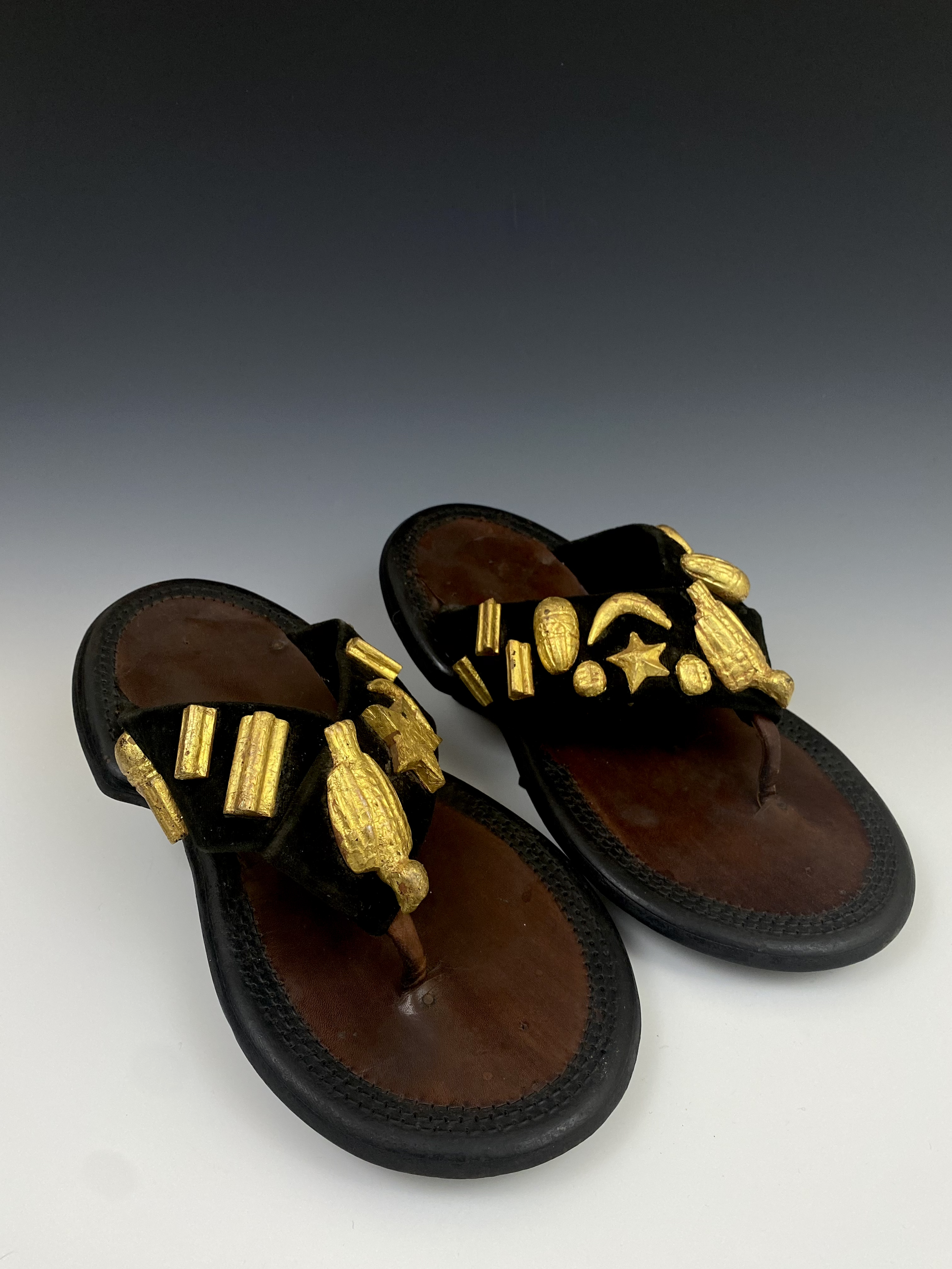Akan Court Regalia Footwear

The Asantehene Nana Otumfoe Sir Osai Agyemang Prempeh II (King of Asante) shown here in regalia wearing elaborate royal sandals.

Chief sandals (mpaboa), leather, wood covered with gold foil. Ghana. Sandals are the equivalent to the European crown when identifying a ruler in the Akan states. The straps are usually covered with gold ornaments that point to proverbs and can also be seen on the abotire headbands or “crowns” of the Akan. It is most likely that the sandals came first and influenced the crowns. Here we see ornaments made of carved wood covered with gold leaf representing the night bird asantrofie (center). This bird motif addresses the dilemmas inherent in decision making, “If you take asantrofie you bring bad luck, if you leave asantrofie you lose good fortune,” a kind of “damned if you do, damned if you don’t” situation.’ (Ross). Other ornaments include fluted forms, cowrie shells, beetles, and the sun and moon motif. The fluted forms are representations of insect cocoons and are more frequently seen in cast form as gold weights. The image is meant to suggest a dilemma: “It is a puzzle to know how the caterpillar entered its cocoon; did it build it before entering it or did it build it around itself?” (Menzel 1968, 181). In other words, some things are destined to remain a mystery. The star and moon motif usually seen on abotire headbands points to a proverb recorded by Garrard: “The evening star, desirous of being married, always stays close to the moon.” He explained, “In the political context it would indicate that the people love their chief and will support him” (Ross)


Akan or Baule court regalia footwear, Côte d'Ivoire. Wood covered with gold foil, textile, 28cm. Like the two Baule pith helmets in the collection, this pair of courtly footwear are true skeuomorphs, objects in the same shapes as the originals, yet carefully carved from wood with intricate surface designs. Provenance: Galerie Noir d'Ivoire, Paris, De Baecque, Paris, October 10, 2024, lot 496, Galerie Walu, Basel.




